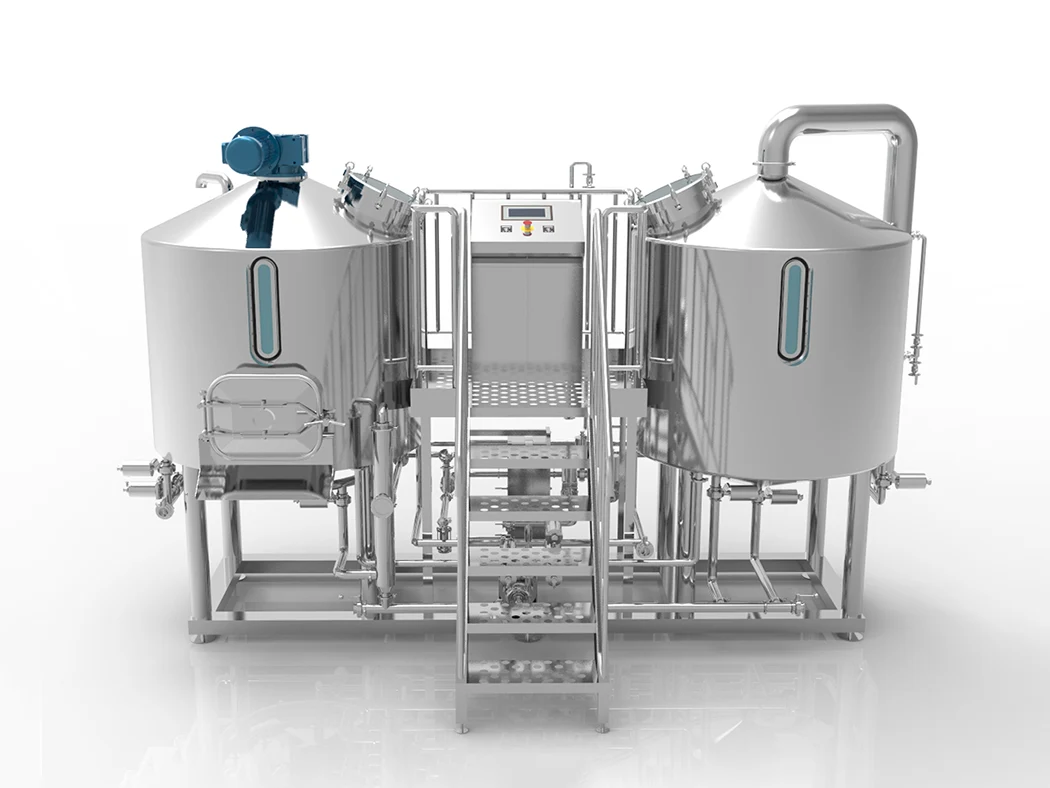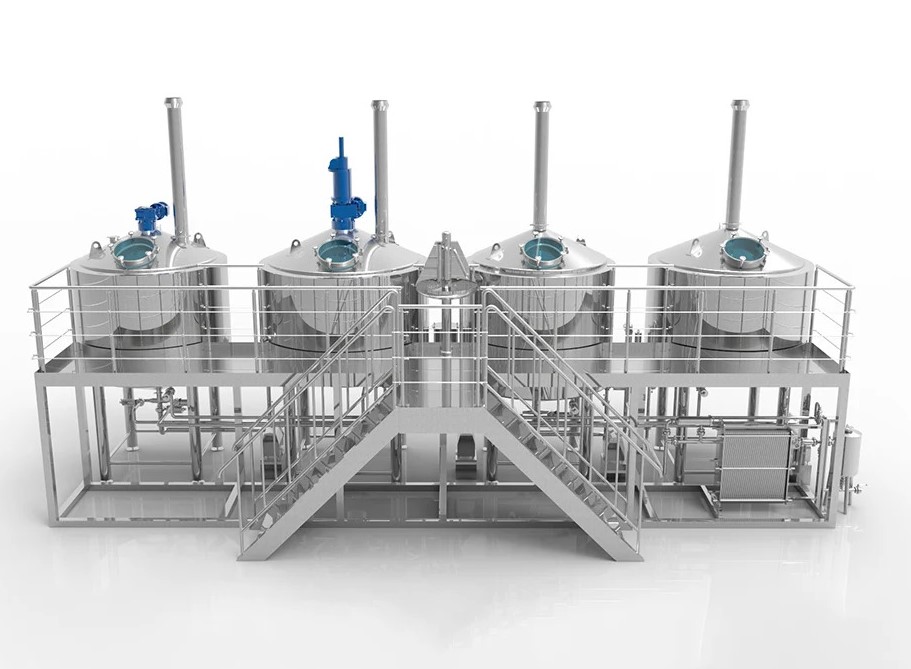Are you struggling to find the right equipment for your winery? Many winery owners feel lost when it comes to choosing the best tools for their production needs. The wrong choices can lead to wasted money, poor wine quality, and frustrated staff.
Think about what happens when equipment doesn’t match your needs. Production slows down. Wine quality suffers. Costs go up. And your dream of running a smooth, profitable winery starts to feel impossible.
The good news is that the right equipment can solve these problems. With proper planning and smart choices, you can build a winery that runs well and makes great wine. This guide will help you pick the best tools for your needs.
Understanding Core Winery Equipment
Every winery needs certain key pieces of equipment to make good wine. Let’s look at what you need:
Stainless Steel Fermentation Tanks
Fermentation tanks are the heart of your winery. These big steel vessels hold your wine while it ferments. Most wineries use stainless steel tanks because they:
- Last a long time
- Are easy to clean
- Don’t change how wine tastes
- Let you control temperature
Good tanks have temperature control systems that keep wine at just the right heat level. This helps make sure your wine ferments properly.
Wine fermenters come in many sizes. Small wineries might use 1,000L tanks. Big wineries use much larger ones.
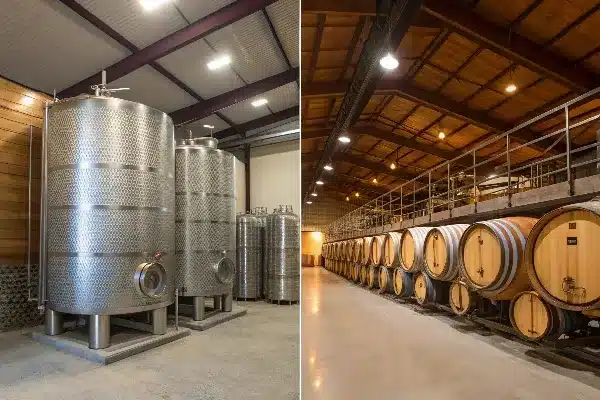
Grape Processing Equipment
Before wine can ferment, grapes must be processed. You need:
- Grape crushers – break open grapes
- Destemmers – remove stems
- Crusher destemmer – does both jobs at once
- Wine press – gets juice from grapes
Many wineries use a bladder press or pneumatic press. These press grapes gently to get good juice without bitter tastes.
Bottling Equipment
When wine is ready, you need tools to put it in bottles:
- Bottle fillers – put wine in bottles
- Corkers – insert corks
- Cappers – add caps
- Labelers – put labels on bottles
A small winery might use simple tools. Bigger wineries need a full bottling line that can fill many bottles fast.
Sanitation Systems
Clean equipment makes good wine. Poor cleaning leads to bad tastes and spoiled wine. A good CIP system (Clean-in-place) helps keep tanks and pipes clean without taking them apart.
Equipment Selection Framework
Capacity Planning
Pick equipment that fits your size. Too small, and you can’t make enough wine. Too big wastes money.
Think about:
- How much wine you plan to make each year
- How much space you have
- If you plan to grow soon
Match your tank sizes and other tools to how much wine you will make.
Material Considerations
The right materials matter. For tanks, you have choices:
- 304 stainless steel – good for most uses
- 316L stainless steel – best for acidic wines, costs more
- Oak barrels – add flavor but cost more and need more care
- Variable capacity tanks – good for small batches
The free-run juice (juice that flows without pressing) needs different handling than press wine (juice from pressing).
Automation Level
How much work should machines do? You can choose:
- Manual tools – you do most work by hand
- Semi-automatic – machines help with some tasks
- Full production lines – machines do most work
Small wineries often start with manual tools. Bigger places need more automation.
Key Metrics To Watch
When picking equipment, check these numbers:
- Flow rates – how fast liquid moves
- Pressure tolerance – how much pressure parts can take
- Energy use – how much power tools need
- Tank cooling ability – how well tanks can keep wine cool
Operational Considerations
Installation Requirements
Setting up winery equipment takes planning. You need:
- Strong floors that can hold heavy tanks
- Right power hookups
- Good water supply
- Proper drainage
- Space for people to work around machines
Many new wineries don’t plan well for these needs. Then they have costly fixes later.
Micet’s engineering team can help design your winery space to avoid these problems. With 15 years of experience setting up over 1000 wineries across 86 countries, they know how to plan properly.
Maintenance Protocols
Regular care keeps equipment working well. A good plan includes:
- Daily cleaning with CIP systems
- Weekly checks of all parts
- Monthly deep cleaning
- Yearly professional service
Oak barrels need special care to last 3-5 years. Plan to spend about $120 per year on each barrel.
Stainless tanks need less care but still need good cleaning to avoid wine problems.
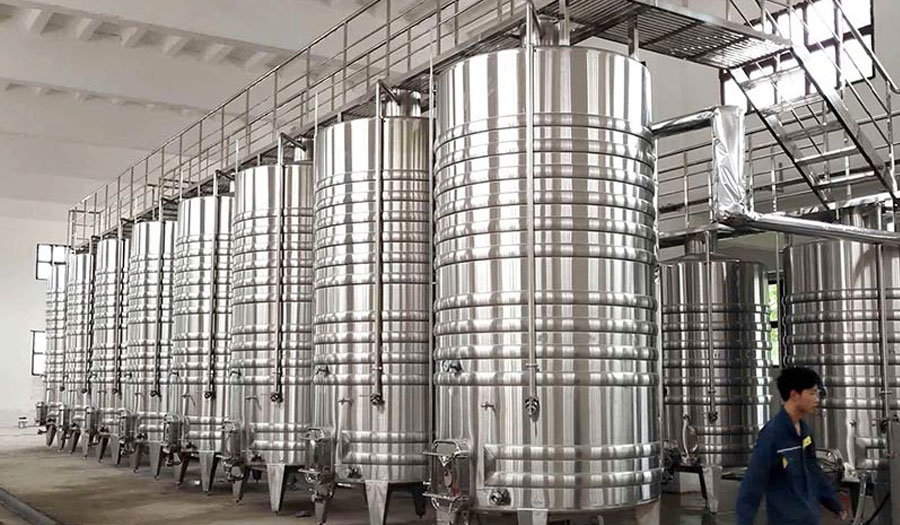
Compliance Issues
Your equipment must meet many rules:
- FDA food safety rules
- OSHA worker safety rules
- TTB (alcohol tax) rules
- Local building codes
Breaking these rules can lead to fines or shut-downs.
Integration Concerns
All your equipment must work together. Problems happen when:
- Pipes don’t fit between machines
- Power needs don’t match
- Space is too tight
- Parts from different makers don’t connect
Working with one supplier for most equipment helps avoid these issues. Micet offers complete solutions so all parts work well together.
Cost Analysis & Suppliers
Pricing Ranges
Winery equipment costs vary widely. Here’s what to expect:
| Equipment Type | Price Range | Capacity | Key Metrics |
|---|---|---|---|
| Fermentation Tanks | $8,000 – $15,000 | 1,000L (typical entry) | Temp control ±0.5°C, 304/316L SS grade |
| Crusher-Destemmers | $5,000 – $50,000+ | 1-10+ tons/hr | Yield: 150-200 gal/ton grapes |
| Bottle Fillers | $12,000 – $80,000 | 500-2,000 bottles/hr | Fill accuracy: ±5ml variance |
| CIP Systems | $15,000 – $60,000 | Tank cleaning: 30-90 min | Chemical use: 1-3% PAA solution |
| Barrel Setup | $1,200 – $1,800/barrel | 225-228L (Bordeaux) | Lifespan: 3-5 years; annual upkeep: $120 |
For a small winery, plan to spend at least $100,000 for basic equipment.
Top Commercial Suppliers
Many companies make winery equipment. Some top names are:
- Della Toffola (hoses/fittings)
- Bucher Vaslin (presses)
- GW Kent (tanks/sanitation)
- Micet Group (full winery solutions)
Micet stands out by offering both equipment and design help. Their team, led by CEO Nancy with 15 years of international experience, helps wineries pick the right tools for their needs.
Operational Data Worth Knowing
| Metric | Industry Standard | Performance Impact |
|---|---|---|
| Fermentation Time | 5-14 days (red) | ↑Temp stability → ↓spoilage risk 30% |
| Bottling Line Efficiency | 85-95% uptime | ↓Downtime → ↑ROI for lines >$50k |
| Energy Use | $0.25-$0.40/gal wine | Jacketed tanks ↓ cooling costs by 15% |
| Wastewater Output | 3-5L per 1L wine | Filtration ↓ effluent BOD by 60% |
Buying vs. Leasing
New wineries face a big choice: buy equipment or lease it?
Buying pros:
- You own it
- No monthly payments
- Can modify as needed
Leasing pros:
- Lower up-front costs
- Can try before buying
- Easier to upgrade
Micet offers both options, with flexible payment plans for new wineries. Their 3-year warranty on tanks and 1-year warranty on other parts gives peace of mind to buyers.
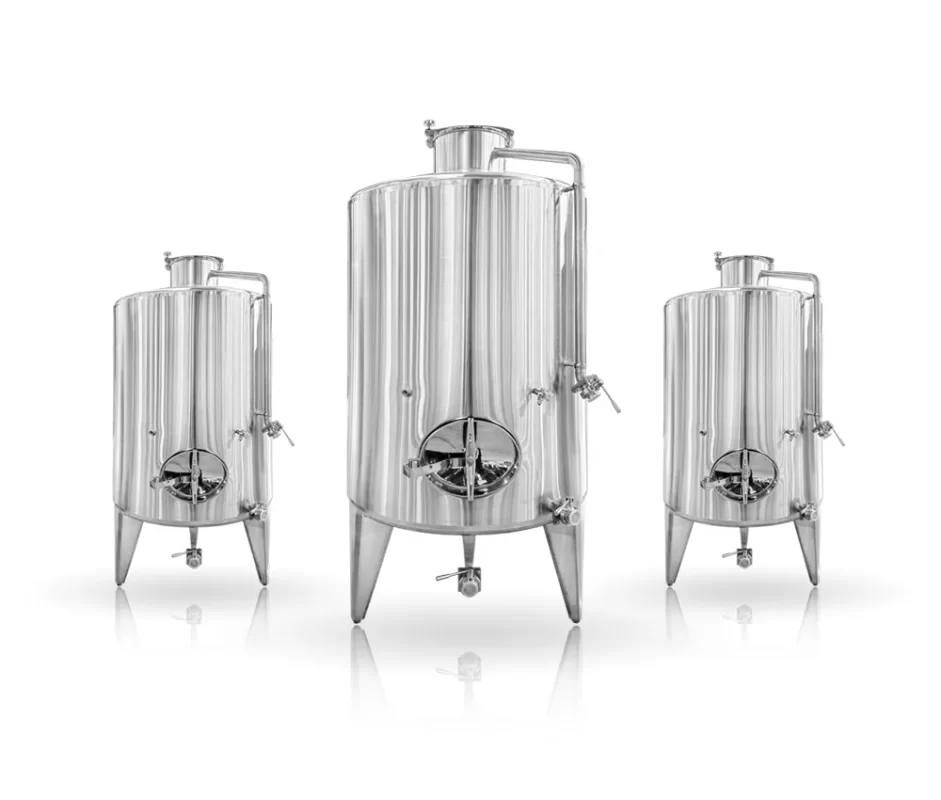
Equipment for Different Winery Sizes
Small Wineries (Under 5,000 cases/year)
Small wineries need basic equipment that works well but doesn’t cost too much:
- Small crusher destemmers ($5,000-$10,000)
- Manual or semi-auto basket press ($3,000-$8,000)
- Small stainless steel tanks ($8,000-$12,000 each)
- Basic filtration systems like pad filters
- Hand bottling equipment or small semi-auto systems
Wine making equipment suppliers like Micet offer special packages for small wineries that include all needed tools.
Mid-Size Wineries (5,000-20,000 cases/year)
Medium wineries need more automation:
- Larger crusher-destemmer ($15,000-$30,000)
- Pneumatic press ($20,000-$40,000)
- More fermentation tanks in various sizes
- Better filtration systems like crossflow filters
- Semi-auto bottling line ($50,000-$100,000)
- Temperature control systems for tanks
Large Wineries (Over 20,000 cases/year)
Big wineries need high-speed, automated equipment:
- High-capacity destemmer crusher ($30,000-$100,000+)
- Large membrane press or multiple presses
- Many storage tanks and fermentation tanks
- Full filtration systems with multiple types
- Complete bottling line ($100,000-$250,000+)
- Advanced CIP system for fast cleaning
Key Equipment Details
Fermentation Tanks
Good tanks make good wine. Look for:
- Jacketed tanks for temperature control
- Manway covers large enough to reach inside
- Butterfly valves that don’t leak
- Tri-Clamp fittings for easy connections
- Tank agitator or mixer if needed
Tanks from quality makers like Micet include proper welds, good finish, and proper seals.
Filtration Equipment
Wine needs filtering to look clear and stay fresh:
- Pad filters – simple, low cost
- Plate filters – more capacity
- Crossflow filters – best but expensive
- Diatomaceous earth filters – traditional method
Each type has pros and cons. Micet’s service team, with 22 years of experience, can help you choose the right system.
Pressing Equipment
Pressing affects wine taste. Options include:
- Basket press – traditional, gentle, slow
- Bladder press – faster, still gentle
- Membrane press – modern, good control
- Pneumatic press – common in mid-size wineries
Press cycles must be set right for your grapes to get good juice.
Bottling Lines
Bottling is the final step. You need:
- Bottle rinser to clean bottles
- Bottle filler to add wine
- Corker or capper to seal bottles
- Labeler to add labels
- Capsule applicator for foil tops
Lines can be manual, semi-auto, or fully automatic.
Implementation Roadmap
Phase-Based Equipment Plan
Smart wineries buy equipment in stages:
- First year: Essential equipment only
- Basic crusher-destemmer
- Simple press
- Minimum tanks needed
- Manual bottling tools
- Years 2-3: Add more as you grow
- More tanks
- Better filtration
- Semi-auto bottling equipment
- Years 4+: Upgrade for efficiency
- Faster, more automated equipment
- Better quality control tools
- More specialized tanks
This approach saves money and lets you learn what works best.
Finding Certified Installers
Good setup matters as much as good equipment. When looking for installers:
- Check their experience with your equipment type
- Ask for references from other wineries
- Make sure they know local codes
- Check if they offer training for your staff
Micet has 12 service centers and agent offices around the world, with locations in France, Australia, Canada, Argentina, and Chile. Their team handles installation and trains your staff on proper use.
Making Your Final Decision
When ready to buy winery equipment, remember:
- Match to your wine type – different wines need different tools
- Plan for growth – buy with future needs in mind
- Consider total cost – not just purchase price
- Check warranty – longer is better
- Ask about support – will they help if problems happen?
Micet’s quality inspectors with 11 years of expertise check all equipment before shipping to ensure you get reliable tools that work right from day one.
Essential Winery Equipment Costs & Metrics
Conclusion
Starting a winery takes the right equipment. With good planning, you can build a winery that makes great wine and runs smoothly.
Remember these key points:
- Match equipment to your size and growth plans
- Look for quality that will last years
- Plan your space for good workflow
- Consider maintenance needs when buying
- Work with experienced suppliers who understand wineries
The difference between struggling and success often comes down to having the right tools for the job. With proper equipment, you can focus on making great wine instead of fighting with faulty machinery.
Ready to start planning your winery equipment needs? Create a detailed list of what you’ll produce, then work with experienced suppliers to find the right tools for your unique situation.
About the Author: This guide was written by wine industry experts with decades of experience helping wineries select and implement equipment solutions. Their goal is helping you avoid common mistakes and build a successful winery operation.

